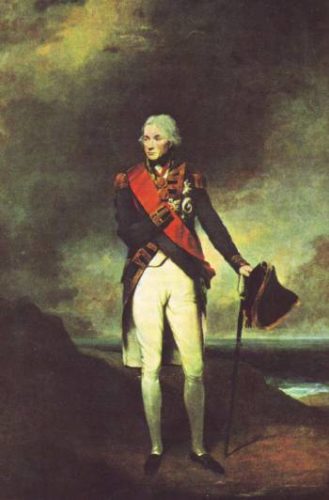- Author
- Thomson, Max
- Subjects
- History - general
- Tags
-
- RAN Ships
- None noted.
- Publication
- December 1995 edition of the Naval Historical Review (all rights reserved)

With its spectacular front cover reproduction of the portrait of Vice-Admiral Viscount Lord Nelson K.B., the September issue of NAVAL HISTORICAL REVIEW was fascinating with its feature story about “The RAN and Trafalgar” and what might have been had he been defeated.
There’s an interesting little aside to it all that may not be generally known.
In 1978 I travelled Australia for four months with the Royal Silver Jubilee Exhibition Train, as publicity man for the multinational oil company that sponsored the train’s tour in conjunction with Harry M. Miller.
The $165 million exhibition of relics dating back 700 years was brought to Australia from the repositories of the Royal Family, the Tower of London, the British Museum, the National Maritime Museum, the Royal Scottish Museum, The Naval Museum at Portsmouth, the National Museum of Antiquities in Scotland and Britain’s Royal Mint.
Unbelievable crowds thronged to see the displays set out spectacularly in all the carriages of the great train when it stopped at the capitals, the regional cities and centres and at endless country sidings on its five-state tour of the railway network of Australia.
Many a history teacher would have been ecstatic at the response given somewhat consistently by young lads asked at the time about what item amid the incredible display captured their imagination most. Repeatedly, the response was: “The bullet that killed Nelson”, the actual piece of metal that mortally wounded him at the height of the Battle of Trafalgar engaging the French and Spanish Fleets on 21 October, 1805. Girls, asked that same question, consistently said they enjoyed most the chance to see “Princess Anne’s wedding gown”.
Nelson’s cocked-hat and eyeshade, Henry VIII’s hunting sword, Charles II’s armour and Queen Victoria’s doll collection all rated highly – but it was “The bullet that killed Nelson” that captured imagination and attention.




